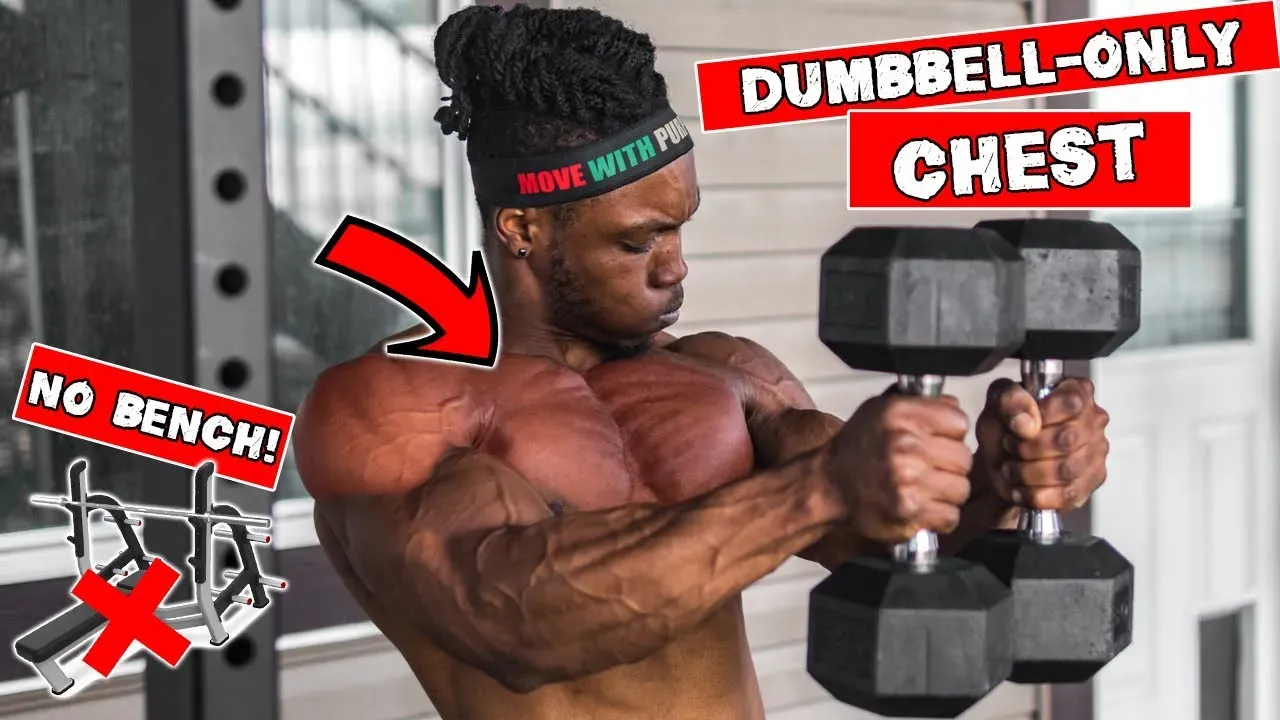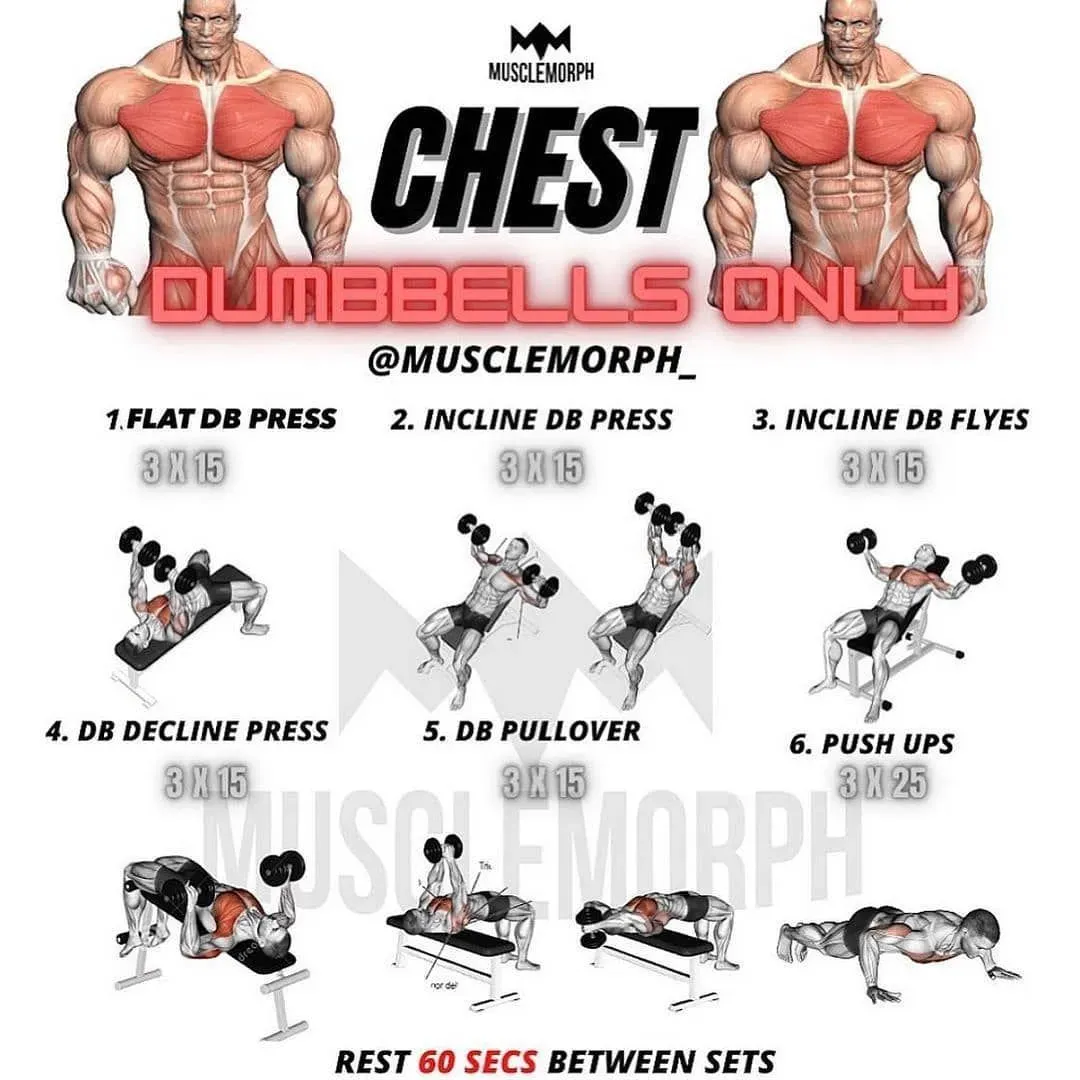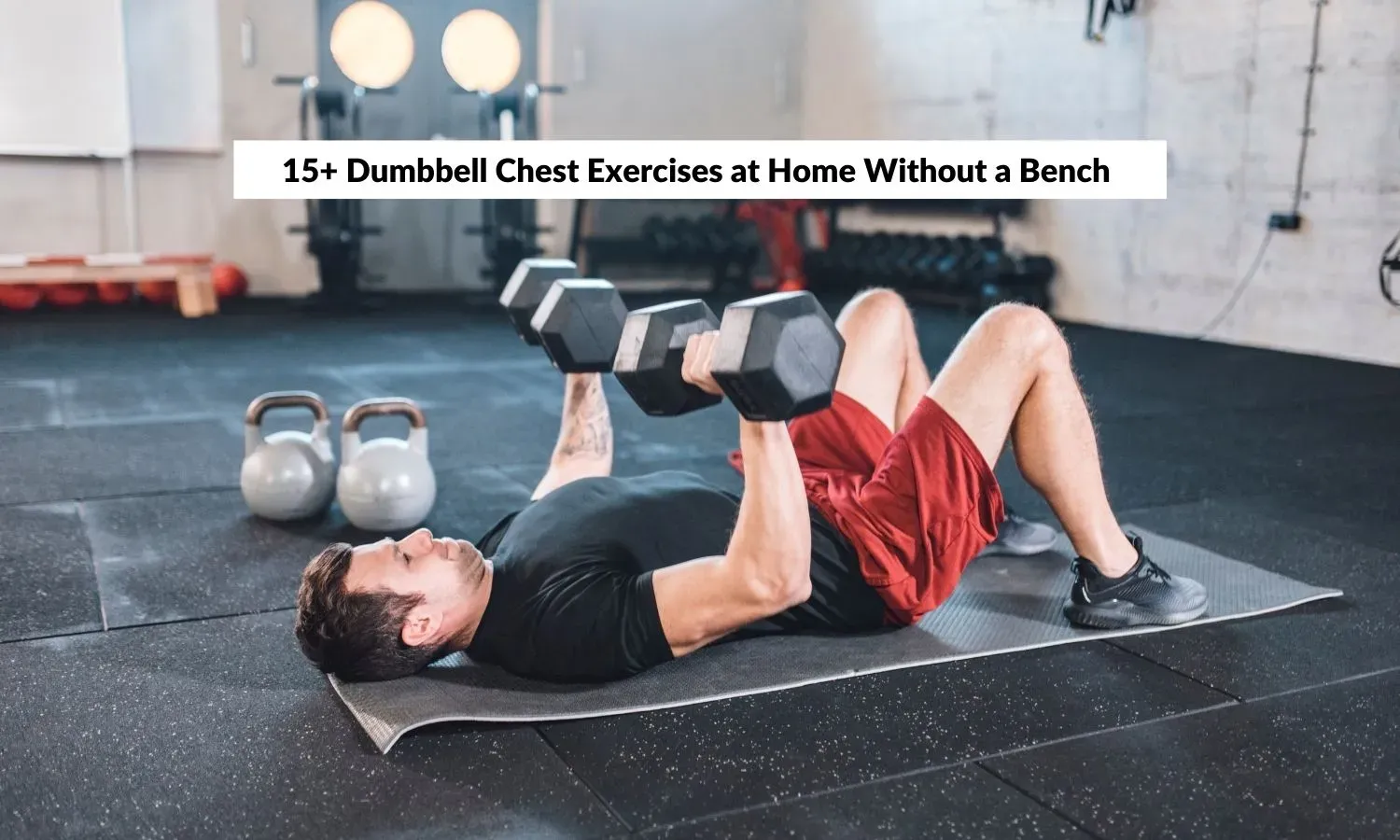Table of Contents
Tired of crowded gyms or just prefer the convenience of building muscle without leaving your house? You're not alone. Getting a solid chest workout often feels like you need a ton of fancy equipment, but that’s simply not the case. All you really need are some dumbbells and a bench, and you can sculpt those pectoral muscles effectively right in your living room or garage gym. Forget making excuses about not having access to machines; a well-structured dumbbell chest workout at home with bench can deliver impressive results, making your chest stronger and improving your physique.
Why Do a Dumbbell Chest Workout at Home with Bench?

Why Do a Dumbbell Chest Workout at Home with Bench?
Cutting the Commute and Crushing Pecs
Let's be real, getting to a gym can feel like a whole workout before you even lift a weight. Traffic, finding parking, waiting for equipment – it adds up. That's where a dumbbell chest workout at home with bench really shines. You roll out of bed, grab your weights, and you're ready to go. No commute, no waiting, just pure focus on building that chest. It’s about making fitness fit into your life, not the other way around. Plus, having your own space means you can grunt, sweat, and listen to whatever terrible music motivates you without judgment.
Serious Gains, Minimal Gear
Some folks think you need a huge multi-gym or a full rack of plates for a serious chest workout at home. Not true. Dumbbells and a bench are incredibly versatile tools. You can hit your chest from different angles, focus on unilateral strength (working one side at a time), and get a deep stretch and contraction that's sometimes harder to achieve with fixed machines. A dumbbell chest workout at home with bench offers a fantastic range of motion and stability challenges that translate into real-world strength and muscle growth. It’s proof you don’t need a commercial gym setup to build a powerful upper body.
Thinking about the upside of this setup? Here's a quick rundown:
- Unmatched convenience and privacy.
- Significant cost savings over gym memberships.
- Ability to train on your own schedule.
- Versatility in exercise selection and angles.
- Focus on stabilizer muscles for better overall strength.
- No waiting for equipment (unless your dog is using the bench).
Beyond Aesthetics: Why Strong Pecs Matter

Beyond Aesthetics: Why Strong Pecs Matter
More Than Just a Beach Body
let's get something straight. While a well-developed chest looks good in a t-shirt, that's just the glossy cover. The real value of strong pecs runs much deeper. Think about your day-to-day life. Pushing open a heavy door? Lifting groceries out of the car? Shoving that stubborn piece of furniture across the room? Your chest muscles, the pectoralis major and minor, are primary movers in all these pushing motions. A strong chest makes you functionally stronger, making everyday tasks feel less like a struggle and more like, well, just living.
Standing Taller, Feeling Better
Poor posture is practically an epidemic in our screen-focused world. Slouching forward rounds your shoulders and can put nasty stress on your spine. Guess what helps counteract that? Strong chest muscles, balanced with a strong back. When your pecs are developed, they support your shoulder girdle and help pull your shoulders back, promoting a more upright and open posture. This not only makes you look more confident but also eases strain on your upper back and neck. It's less about puffing your chest out and more about supporting your frame efficiently.
Here’s a quick look at how robust pecs contribute beyond the mirror:
- Improved pushing power for daily tasks.
- Better shoulder stability and health.
- Enhanced posture, reducing back and neck strain.
- Increased overall upper body strength.
- Support for respiratory function (though minor, still a factor).
Injury Proofing Your Upper Body
Training your chest isn't just about moving weight; it's about building resilience. Strong pectoral muscles, working in concert with your shoulders and triceps, create a more stable and robust upper body unit. This stability is crucial for preventing injuries, whether you're reaching for something awkward, catching yourself from a stumble, or engaging in other physical activities. A well-trained chest provides a solid foundation, helping distribute forces safely across your joints. Neglecting them leaves a weak link in your upper body chain, making you more susceptible to tweaks and strains.
Essential Dumbbell Chest Exercises You Can Do with a Bench

Essential Dumbbell Chest Exercises You Can Do with a Bench
Alright, so we’ve covered *why* training your chest with dumbbells and a bench at home is a smart move – the convenience, the functional strength, the posture boost. Now, let’s get down to the brass tacks: the actual movements. Having a bench changes the game significantly compared to just the floor. It allows for a greater range of motion, particularly on pressing movements, letting you lower the dumbbells past your body for a deeper stretch at the bottom. This extra range means more muscle fibers engaged and potentially more growth. Building an effective dumbbell chest workout at home with bench relies on mastering a few core exercises that have stood the test of time because, frankly, they work.
Getting the Most from Your Dumbbell Chest Workout at Home with Bench: Form and Safety Tips

Getting the Most from Your Dumbbell Chest Workout at Home with Bench: Form and Safety Tips
Mind Your Angles: Getting Form Right
Alright, you've got the dumbbells, the bench, and the motivation for your dumbbell chest workout at home with bench. Now, let's talk turkey: form matters. A lot. It’s the difference between actually building your chest and just awkwardly flailing weights around, likely injuring something important. When you lie on that bench, your feet should be flat on the floor, giving you a stable base. Pull your shoulder blades back and down like you're trying to tuck them into your back pockets. This slight arch in your lower back is normal and helps protect your shoulders while letting your chest do the work. Don't let your shoulders roll forward; keep them pinned.
Control the Chaos: Lifting Safely
Choosing the right weight is crucial. Go too heavy, and your form collapses faster than a cheap tent in a hurricane. You should feel challenged by the last few reps, but not so much that you can’t control the weight through the full range of motion. Lower the dumbbells slowly and with control – think of it as resisting gravity on the way down. This eccentric phase is where a lot of muscle damage (the good kind that leads to growth) happens. Don't bounce the weights off your chest at the bottom. Keep the movement deliberate and smooth. If you're failing reps and have to drop the weights, maybe it's time to lighten up a little. Nobody's judging your home gym weight selection.
Here are a few common form pitfalls to steer clear of:
- Flaring your elbows out too wide (puts strain on shoulders).
- Letting your hips lift off the bench.
- Using momentum instead of muscle to lift the weight.
- Not getting a full range of motion (stopping short at the bottom or top).
- Holding your breath throughout the set.
Breathe and Brace: Finishing Strong
Breathing seems simple, right? Inhale on the way down, exhale as you push the weight up. It’s not rocket science, but people mess it up constantly. Proper breathing helps you brace your core, which provides stability on the bench. A stable base means more power transferred to your chest muscles. Also, think about the tempo. A common recommendation is something like a 2-second lower, pause briefly at the bottom (if comfortable for your shoulders), and a controlled 1-second press up. Don't just drop the weight and heave it back up. That controlled movement, especially on the way down, maximizes tension on the muscle fibers you're trying to target during your dumbbell chest workout at home with bench.
Structuring Your Dumbbell Chest Workout at Home with Bench for Consistent Gains

Structuring Your Dumbbell Chest Workout at Home with Bench for Consistent Gains
Finding Your Rhythm: How Often to Train
you've got the exercises down for your dumbbell chest workout at home with bench. Now, how often should you hit those pecs? Training a muscle group needs a balance. Too little, and you won't see much progress. Too much, and you risk overtraining, which feels like hitting a wall made of exhaustion and minor aches. For most people looking to build muscle, hitting the chest directly twice a week works like a charm. This gives your muscles enough stimulus to grow, followed by enough time to recover and repair before the next session. Spread these workouts out – maybe a Monday and a Thursday, or a Tuesday and a Friday. This consistent frequency is far more effective than trying to cram everything into one monster session a week.
Sets, Reps, and Making Progress
Once you know *when* to train, you need to figure out *how* to train during your dumbbell chest workout at home with bench. The sweet spot for muscle growth (hypertrophy) generally falls in the 8-12 rep range per set. Pick a weight that allows you to complete at least 8 reps with good form, but makes getting to 12 a real grind. Aim for 3-4 sets per exercise. Across your entire chest workout, targeting 12-16 total sets for the chest seems to be the sweet spot for most people. But here's the crucial part: don't do the same thing forever. To keep growing, you need to apply progressive overload. This means, over time, you need to make the workout harder. That could mean using slightly heavier dumbbells, doing an extra rep or two with the same weight, adding an extra set, or even just slowing down the tempo for more time under tension. Sticking to the same weights and reps week after week is a surefire way to stall your progress.
Putting it together for your home sessions:
- Train chest 2 times per week, with at least 48 hours between sessions.
- Choose 3-4 exercises per workout.
- Perform 3-4 sets per exercise.
- Aim for 8-12 reps per set, pushing close to failure on the last few reps.
- Focus on progressive overload: increase weight, reps, or sets over time.
- Total sets for chest per week: 12-16.
Building Your Chest at Home: The Final Word
So there you have it. You don't need a fancy gym or a stack of expensive machines to build a strong, well-defined chest. A simple dumbbell chest workout at home with bench provides all the tools necessary to make serious progress. We’ve covered why strong pecs matter beyond just filling out a t-shirt, broken down the essential exercises, and discussed how to perform them correctly and safely. Consistency and proper form are your greatest allies here. Stick to a plan, challenge yourself regularly, and you’ll see that your living room can be just as effective a training ground as any crowded fitness center. Now go pick up those dumbbells.
